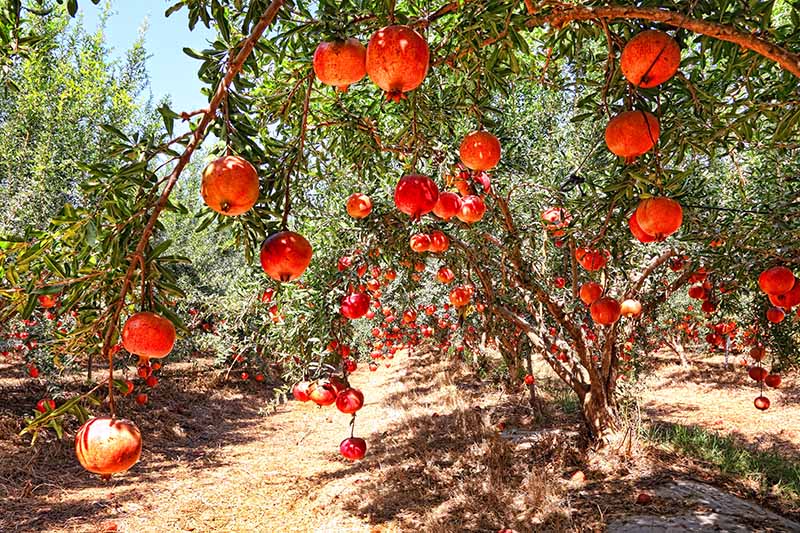The Pomegranate plant is a deciduous shrub that bears fruits. Pomegranate is also suitable as an ornamental plant and grows beautiful orange-red flowers.
Punica Granatum, commonly known as pomegranate or Chinese apple is an exotic plant that comes from Asia, and it also grows very well in the Mediterranean sea.
Pomegranate can be used for decoration, and the fruits are edible and nutritious.
Origin of Pomegranate
Pomegranate plants and fruits have been known for centuries. It probably orginated in Persia.
It is even historically recorded that pomegranate was grown and cultivated thousands of years ago.
In the Bible and the Qur’an, this plant is mentioned several times.
According to the Bible, the Jewish temple was decorated with pomegranate sculptures.
Also in poetry, the pomegranate was used as a symbol.
In Greek mythology, this fruit is also mentioned here, it is a symbol of fertility.
In ancient times, a healing effect was attributed to pomegranates and these were rediscovered in modern times too
Cultivation of Pomegranate
Pomegranate survives only in a very mild winter in regions where the temperatures are negative or absolute zero.
In some places, it is not possible to cultivate the pomegranate in the open air because winter is not favorable weather for its growth.
Anyway, if you would like to plant a pomegranate, try it in a large pot and keep it out only in warm weather.
In early autumn, the pot should be in the house. During winter, the pomegranate plant is kept warm in the garden all year round and gets sun.
This is what’s usually recommended. The pomegranate is different from most fruits.
There are hundreds of fruit cores that are berry-like sitting inside the bowl.
These are bulging and filled with the juice of the pomegranate and taste delicious.
However, it is often difficult to remove the pomegranate as they are surrounded by fruit walls that taste bitter ( the fruit cores)
Peeling a pomegranate is not an art
Most people shy away from the pomegranate because there are problems with the peeling again.
This requires only a very sharp knife, and a good countertop – it’s best when it is made of glass or plastic that makes cleaning easier afterward.
You should have an apron ready because splash can be poorly removed from clothes.
Then, you take the pomegranate in hand so that the fruit base is held firmly in your hand.
The Crown is now cut off. Now turn around and also thin cut it off from the other side.
Now the walls are cut, they can be solved out the pulp, the cores, – best from the Middle, or starting from the top.
Here you can also break it, which facilitates the release of nuclei.
As a tip, you can still remember that the easiest way is for you to try the whole thing in a bowl with water.
Then, there would be no splashes and the white release pellicle come off easier.
How to Cut Pomegranate
You can follow a few clues that make the core easier.
Before the core, you can roll the pomegranate, for example on the sideboard, back and forth with a little pressure.
Cut a rectangular hole in the top, then follow the white walls of fruit at the carving effect.
How to Open Pomegranate
You can cut the pomegranate just like an orange, then, it opens only in the half.
You can then tap on the bottom of the fruit over a bowl. This is usually done with a wooden spoon.
While tapping the fruit seeds that are released. The small scrap of fruit skin must be sorted before being eaten out.
Also, you can put the pomegranate core in water to avoid more spraying.
However, much of the juice may be lost, which tastes very delicious.








